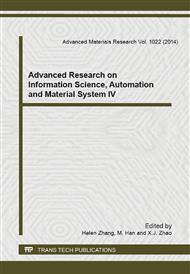p.56
p.60
p.64
p.68
p.72
p.76
p.83
p.87
p.91
Characteristics of Electron Structure and 4f Orbital of Rare Earths and Their Reinforcement of Wastewater Degradation
Abstract:
The reason why rare earth (RE) can play a role of strengthening catalytic degradation of wastewater has always been the topic of common interest for experimental and theoretical chemists. First it discussed the structural features and acts of RE elements, such as 4f orbitals whether to take part in bonding, their hybrid approach and the bonding ability of the hybrid orbitals. Then the paper took attention to how REs to reinforce catalysis for degradation of wastewater, including following aspects: REs' reinforcement on catalytic wet oxidation ability of wastewater, REs advancing H2O2 catalytic oxidation ability to deal with wastewater, REs improving TiO2 photolysis efficiency of organics, and REs further improving role of O3/TiO2/UV photocatalytic degradation for wastewater. Finally there were the conclusion and prospect. Looking to the future, the quantitative understaning the 4f orbital of RE contribution still need to rely on the further development of quantum chemistry theory and method.
Info:
Periodical:
Pages:
72-75
Citation:
Online since:
August 2014
Authors:
Keywords:
Price:
Сopyright:
© 2014 Trans Tech Publications Ltd. All Rights Reserved
Share:
Citation:


